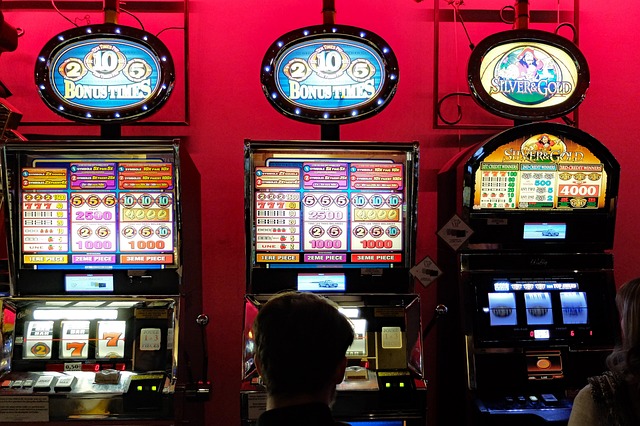Slot machines have been a cornerstone of gambling culture for over a century, evolving from simple mechanical devices to the digital, feature-rich experiences we find in online casinos today. What began as a coin-operated novelty in the late 19th century has grown into one of the most popular and profitable forms of gaming in the world.
From the invention of the Liberty Bell by Charles Fey to the introduction of video slots and eventually online slot games, each stage of development has reflected broader changes in technology, design, and player expectations. Understanding the history of slot machines not only provides insight into how the industry evolved but also reveals why these games remain so enduringly popular.
Let’s explore the fascinating journey of slot machines—from mechanical marvels to virtual entertainment.
The Birth of the Liberty Bell
The story of slot machines begins in 1895 when Charles Fey, a mechanic in San Francisco, invented the first real slot machine: the Liberty Bell. It featured three spinning reels, each with five symbols: hearts, diamonds, spades, horseshoes, and the cracked Liberty Bell.
Players would insert a coin, pull the lever, and hope for a matching set of symbols. The biggest payout—50 cents—came from landing three Liberty Bells in a row. What made the Liberty Bell revolutionary was its automatic payout system, which eliminated the need for a human operator.
Due to high demand, Fey couldn’t keep up with manufacturing, and his design inspired countless imitators across the country. The simplicity and ease of use made it a hit in bars and saloons, laying the foundation for the modern slot machine.
The Rise of Fruit Machines

In the early 1900s, gambling laws became stricter, and many states banned cash payouts from slot machines. To skirt these laws, manufacturers began using fruit symbols and offering non-cash rewards, such as chewing gum or candy, depending on the symbols matched. That’s why many classic slots still feature cherries, lemons, plums, and BARs.
These machines became known as “fruit machines”, especially in the UK, and remained extremely popular throughout the 20th century. Though the prizes were often small, the games retained their addictive charm and bright, colorful appeal.
Electromechanical Era
A major leap occurred in 1963 with the development of the first fully electromechanical slot machine, named Money Honey, created by Bally. This machine introduced:
- Electric-powered spinning reels
- Automatic payouts of up to 500 coins
- A bottomless hopper for storing coins
Electromechanical slots paved the way for more complex gameplay and larger jackpots. The traditional lever was eventually replaced with a button, though many machines kept the lever for nostalgia.
As casinos began adopting these new machines, slot floors grew, and revenues soared. By the 1980s, slots had become more profitable than table games in many casinos.
Video Slots Revolution
The next major transformation came in 1976 when the first video slot machine was introduced by Fortune Coin in Las Vegas. Using a modified television screen, this new version displayed virtual reels, allowing for:
- Greater graphical freedom
- More bonus features and themes
- Higher jackpot possibilities
Nevada regulators approved the design, and video slots quickly spread across casinos. They offered eye-catching visuals, immersive sound, and more complex payline structures than ever before.
This period marked the beginning of slot machines as entertainment platforms, moving beyond pure chance to include storytelling and interactivity.
The Internet and Online Slots
With the rise of the internet in the mid-1990s, slot machines took another leap forward into the digital world. Online casinos began offering virtual slots that mimicked their land-based counterparts but added more flexibility and variety.
Key changes included:
- Hundreds of themes, from mythology to pop culture
- Progressive jackpots linked across multiple games and platforms
- Features like free spins, wilds, scatter symbols, and bonus rounds
Players could now spin the reels from the comfort of home, and real money online gambling quickly became a global industry. Flash-based games dominated early online slots, but over time, HTML5 and mobile optimization took center stage.
Mobile Gaming and the Megaways Era

In the 2010s, smartphones and tablets transformed the gambling experience again. Casinos optimized their platforms for mobile play, making it easy to spin reels on the go. Responsive design, faster processors, and touch controls created an immersive experience tailored to modern lifestyles.
This era also introduced innovative mechanics like Megaways, which changed the structure of reels and paylines dynamically with every spin. Slot games became more interactive, visually stunning, and personalized.
Many of today’s popular slots feature:
- Licensed content (TV shows, movies, celebrities)
- In-game missions and loyalty systems
- Social features and tournaments
- Cryptocurrency integration for deposits and wagers
Looking Ahead: The Future of Slots
As technology continues to evolve, the future of slot machines may include VR environments, AI-driven personalization, and blockchain-based fairness verification. Developers are also experimenting with skill-based slots, merging arcade-style challenges with chance-based mechanics.
Despite all these changes, the core appeal remains the same: simple gameplay, instant rewards, and the thrill of the unknown. Whether you’re pulling a lever on an old Liberty Bell replica or tapping a button on your smartphone, slot machines continue to deliver timeless entertainment.
The history of slot machines is a story of constant innovation. From mechanical gears to immersive online experiences, these games have adapted to every major technological shift while keeping their classic charm intact. With each new generation of slots, players find new ways to engage with one of gambling’s oldest—and most beloved—formats.
